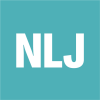The Wicked Character of Psychosocial Risks: Implications for Regulation
DOI:
https://doi.org/10.19154/njwls.v6i3.5526Keywords:
Health, working environment & wellbeing, Organization & managementAbstract
Psychosocial risks constitute a significant problem in most workplaces, and they are generally considered more difficult to regulate than many other occupational health and safety risks. This article investigates the challenges of regulating psychosocial risks in the workplace. The difficulties lie in the particular nature of psychosocial risks: their complexity, uncertainty, value, and power divergences. Psychosocial risks therefore resemble ‘wicked problems’, typically characterized by unclear cause-effect relationships and uncertain solutions. We use the ‘wicked problems’ concept to show how workplace regulation, and particularly the enforcement in the form of inspection and audits of certified occupational health and safety management systems, face challenges in assessing psychosocial risks and the strategies used by regulators to overcome these challenges. While regulation has become more effective in several countries, a better understanding of the nature of the challenges is still needed. It is necessary to accept the uncertain nature of psychosocial risks in the search for more efficient regulation. Achieving more effective regulation should involve stakeholders in the workplace who deal with the prerogatives of management, and should help develop the competencies of the inspectors and auditors in the field.Downloads
Published
How to Cite
Issue
Section
License
The Copyright Holder of this Journal is the authors and the Journal. Normally the journal use the CC-BY NC-ND 4.0 licence.
Exceptions to the license terms may be granted
If you want to use content in the Journal in another way then described by this license, you must contact the licensor and ask for permission. Contact Annica Asp at annica.asp@kau.se. Exceptions are always given for specific purposes and specific content only.
Sherpa/Romeo
The Journal is listed as a blue journal in Sherpa/Romeo, meaning that the author can archive post-print ((ie final draft post-refereeing) and author can archive publisher's version/PDF.
Copyright of others
Authors are responsible for obtaining permission from copyright holders for reproducing any illustrations, tables, figures or lengthy quotations previously published elsewhere.
Archives policy
All published material is archived at the Danish Royal Library in conformity with the Danish rules of legal deposit.
Plagiarism screening
We do not screen articles for plagiarism. It is the responsibility of the authors to make sure they do not plagiate.



